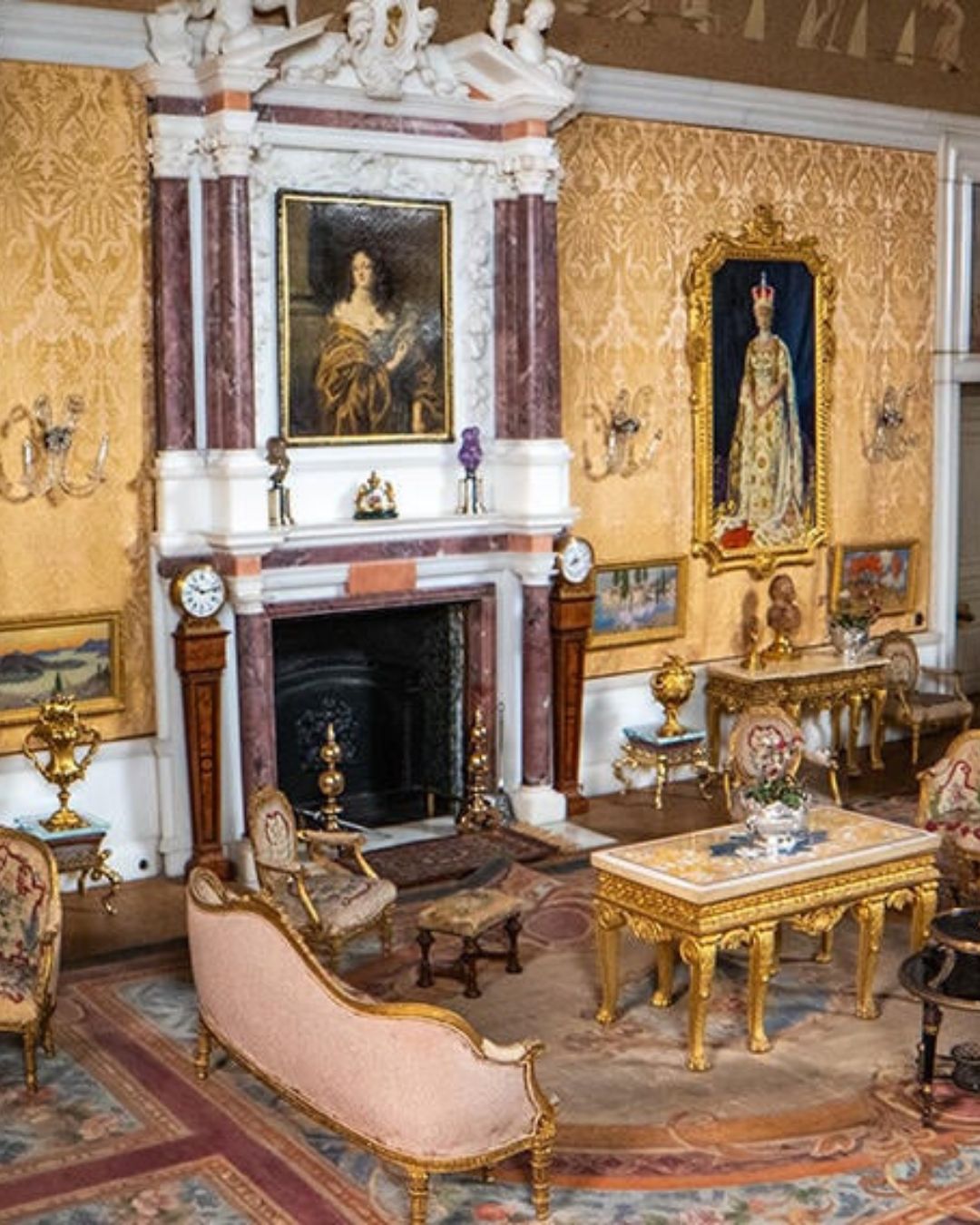< Historic Diamonds / Famous Diamonds
A Travel Guide to the World’s Most Famous Natural Diamonds
Put these epic diamonds on your travel itinerary.
Updated: October 31, 2025
Written by: Jill Newman

When Harry Winston donated the legendary Hope Diamond to the Museum of Natural History in Washington, D.C. in 1958, he mailed the stone via the United States postal service for $2.44. That was a seemingly risky move considering that the 45.52-carat steely blue diamond has been valued by some at $200 million to $300 million; others say it’s priceless.
But Harry Winston believed that everyone should enjoy seeing the most famous natural diamonds in the world, which is why he contributed the Hope Diamond and other famous stones to public institutions. Historic and famous natural diamonds are a main attraction in several museums internationally. It’s historic and cultural material, and often a symbol of a nation’s wealth and power.
Meet the Author

- Jill Newman is a jewelry authority, editor, and storyteller with over 25 years of experience, having reported from diamond mines in Africa, cutting workshops in India and Belgium, and ateliers around the world.
- She serves as Editor-at-Large for the Natural Diamond Council, with additional bylines in The New York Times, Town & Country, Elle Décor, and Robb Report.
Here are eight world-class museums where you can see some of the most famous natural diamonds in the world. Think of all the selfies!
World’s Most Famous Natural Diamonds: The Spoonmaker’s Diamond, Topkapi Palace Museum , Istanbul
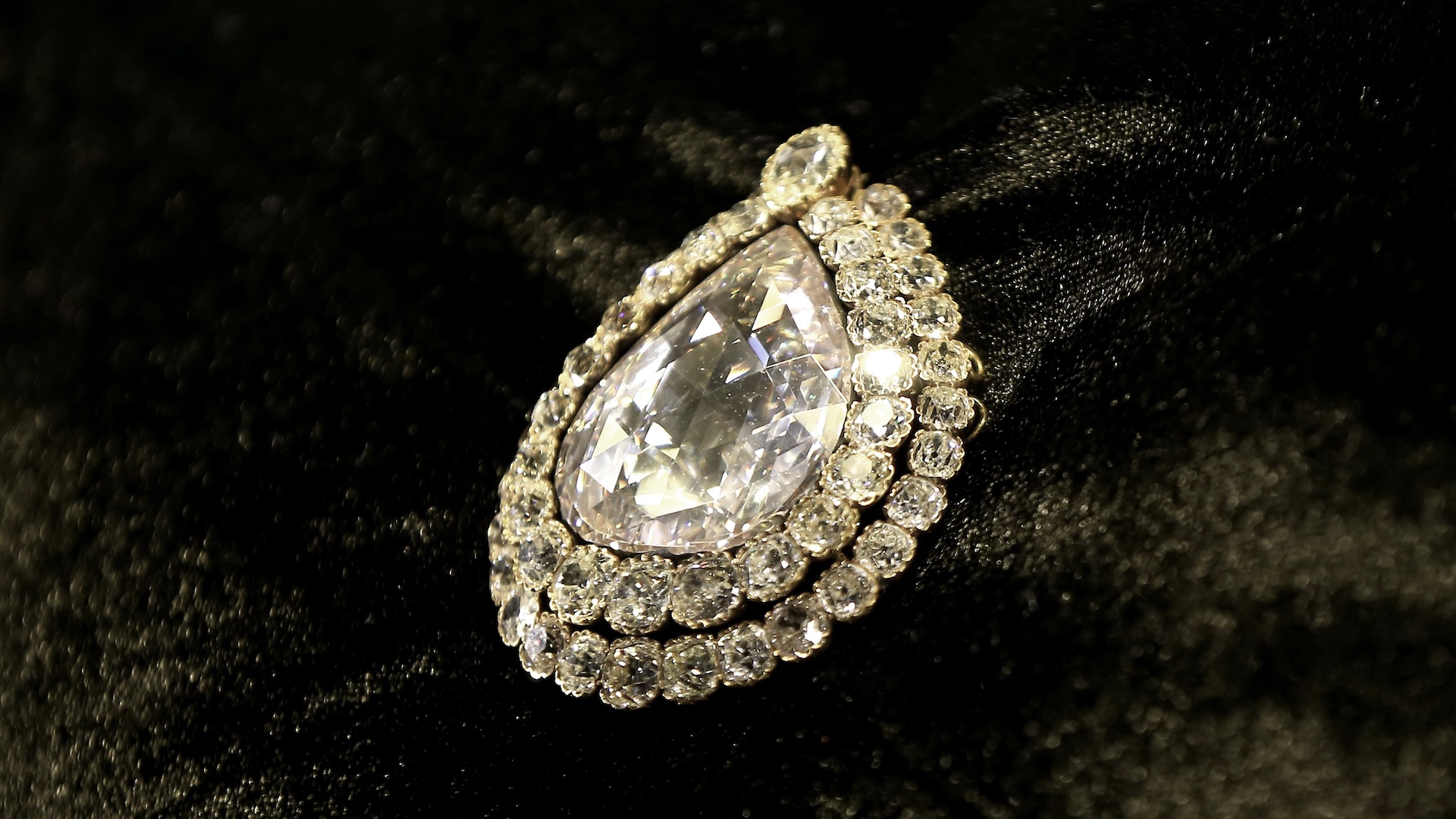
For a true spectacle travelers must visit the Spoonmaker’s Diamond housed at the Imperial Treasury of Istanbul’s Topkapi Palace Museum in Istanbul, Turkey. Weighing in at approximately 86 carats this is one of the most spectacular and intriguing diamonds in the world.
The lore behind it is amazing. According to legend, the diamond was discovered by a poor spoon-maker—who found it among debris and then traded it for a few spoons, unknowingly passing along one of the greatest diamonds in history. The stone later entered the Ottoman treasury, where it became a prized part of the imperial collection.
The diamond’s ownership has been linked to Ottoman sultans Selim III and Mahmud II, and possibly to Ali Pasha of Tepelena. Today, the Spoonmaker’s Diamond is displayed in a most glamorous way by 49 old mine-cut diamonds, creating a radiant halo effect often described as “a luminous moon encircled by a starry sky.”
Though many through the ages labeled it as a brilliant-cut diamond, it is actually a large, pear-shaped, rose-cut diamond with a foiled, flat back.
World’s Most Famous Natural Diamonds: The Régent, Louvre Museum, Paris

If Paris is on your itinerary this summer, make sure to visit the Apollo Gallery in the Louvre Museum to see the museum’s most impressive jewel: The 140.5-carat Régent diamond, which as a symbol of the French monarchy’s power and wealth has adorned Emperor Napoleon Bonaparte’s sword and several royal crowns.
Discovered in Golconda, India in 1698, the stone was originally purchased (some say stolen) by Sir Thomas Pitt, then Governor of the British settlement of Madras. In 1717, he sold it to Duke Philippe d’ Orléans, the French Regent (hence the name), who added it to the French Crown collection. In 1792 during the French Revolution, the stone disappeared.


A year later, it was discovered hidden in the beams of an attic, and in 1800 purchased by Napoleon I. It was the centerpiece of royal crowns and regalia, and last adorned Empress Eugenie’s Greek-style diadem. It’s been part of the Louvre’s collection since 1887.
The Louvre’s collection also houses the fabled Sancy, a 55.2-carat pale yellow, pear-shaped diamond, which can be traced back 500 years to Charles the Bold. It was pawned to finance wars, stolen, and a loyal servant swallowed the stone rather than forfeit it to thieves. It was later removed from his cadaver.
World’s Most Famous Natural Diamonds: The Dresden Green, Green Vault, Dresden Royal Palace
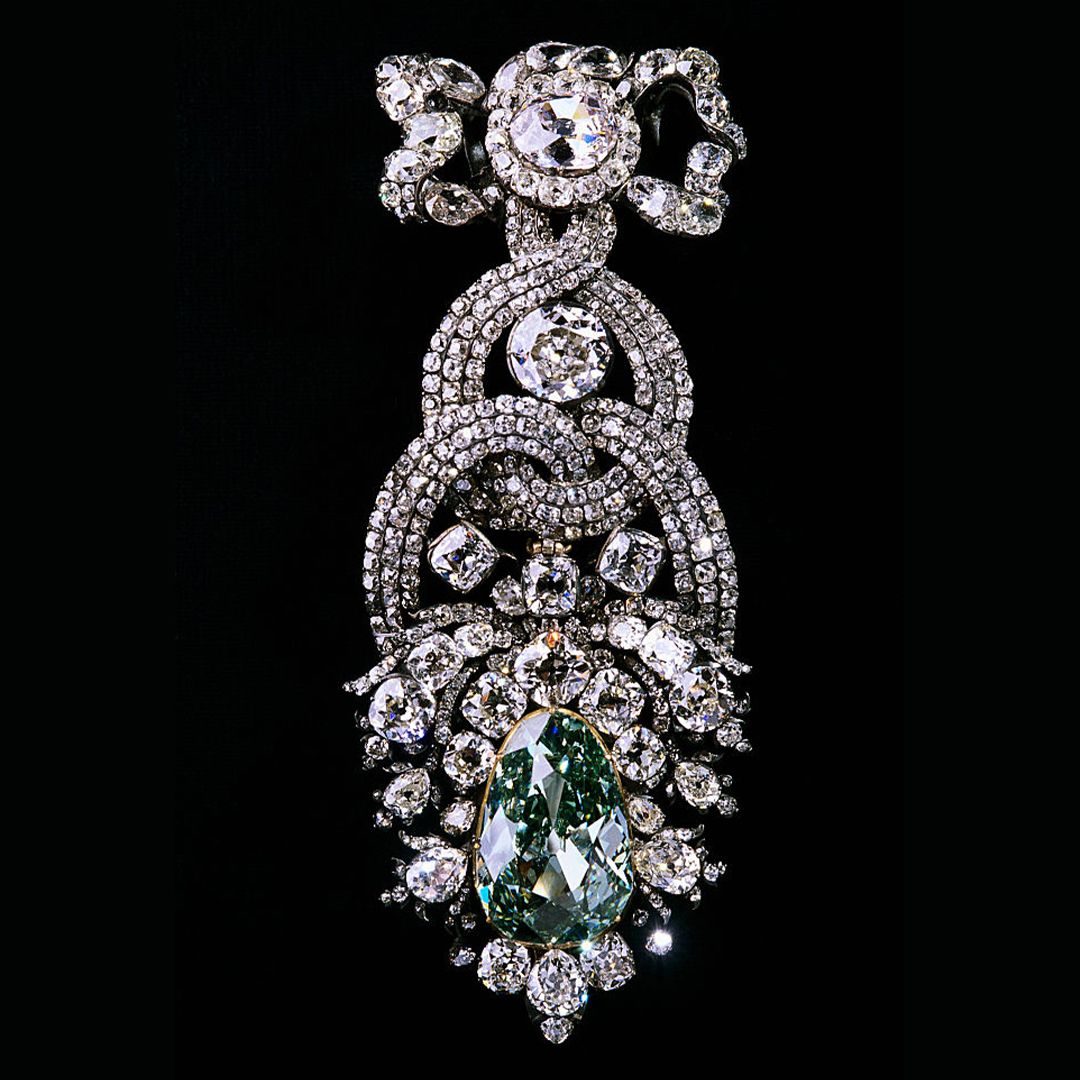

In 2019, the Dresden Green Vault was the scene of a jewelry robbery worthy of a movie. Luckily, the museum’s most famous diamond, the Dresden Green, was on exhibit at New York’s Metropolitan Museum of Art at the time of the break-in. The thieves were promptly apprehended but it took another year to locate the missing jewels, which are back on exhibit in the museum.
At 41 carats, the Dresden Green diamond is a once-in-a-lifetime jewel. Green diamonds are exceptionally rare, and one of this size is considered a freak of nature. Discovered in the historic Golconda mines of India in 1722, the green diamond became part of the Royal Court of Saxony, and an emblem of the Golden Fleece. Frederick the Great of Prussia fancied the stone, and had it set in a hat pin, where it is still displayed today.
World’s Most Famous Natural Diamonds: The Daria-i-Noor, Iran National Jewelry Museum, Tehran
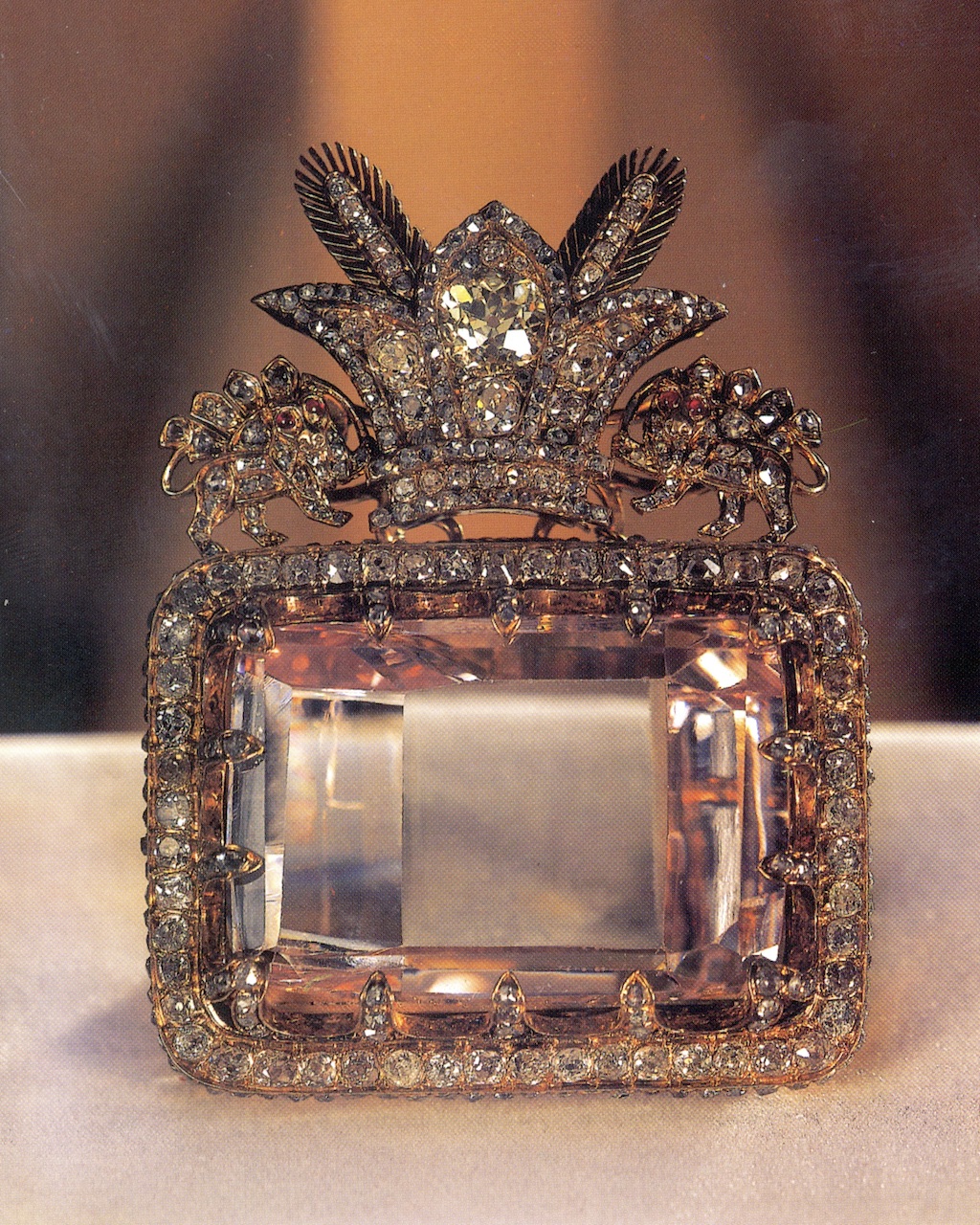
This should be top of your list as this extensive collection of the world’s most famous natural diamonds to see, which is located within the Iranian Central Bank, houses the world’s largest diamond collection, which is owned by the government. Collected over centuries by the Iranian monarchy including crowns, tiaras, swords and shields, worn by members of Persian royal dynasties.
The main draw for some of the The National Jewelry Museum of Iran is the epic 182-carat Daria-e Nur (also spelled Darya-ye Noor and Daria-i-Nur) means Sea of Light. It is believed to have been cut from the even larger “Great Table” diamond from India’s Golconda Region. The light pink diamond is one of the rarest in the world and was a part of the war bounty when the Emperor of Persia invaded Delhi in 1739 and stole the crown jewels.
This museum is full of incredible treasures for diamond seekers. The Naderi Throne, made by the order of Fat’h-Ali Shah Qajar in the 18th century, is also housed there and shines bright with its 26,000 gems and enamel moldings. Museum goers can also see the Pahlavi Crown, worn at the 1967 coronation of Mohammad Reza Shah, which has over 3,000 diamonds. This is the epitome of royal opulence in museum form.
World’s Most Famous Natural Diamonds: The Hope Diamond, Museum of Natural History, Washington, D.C.
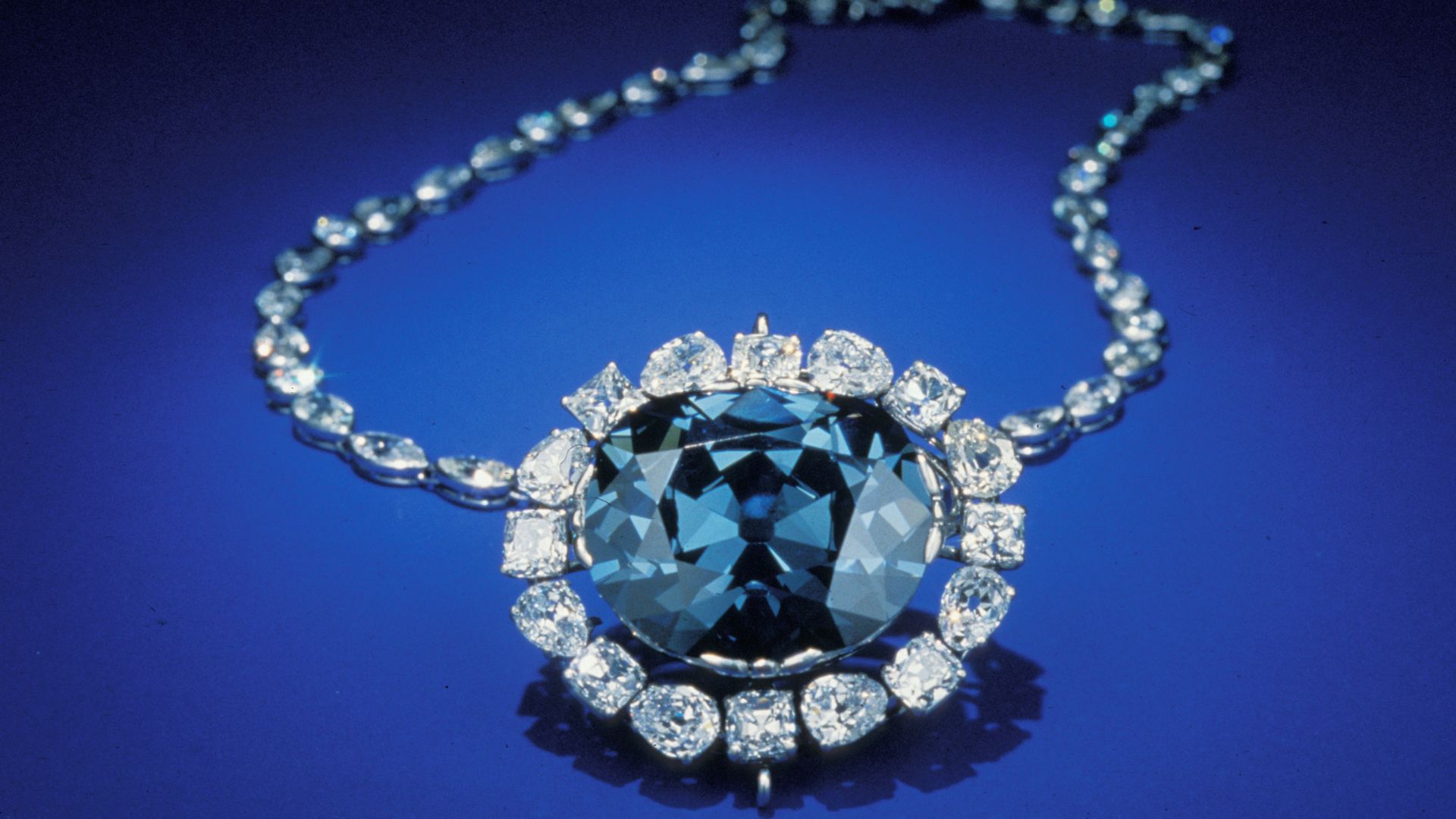
Millions of visitors line up every year to view the Hope Diamond, which is the centerpiece of the museum’s Hall of Gems and one of the world’s most famous natural diamonds. Until the Hope came to light, most people never knew that diamonds could be blue. More recently, elusive blue diamonds have caught the public’s attention with record-breaking sales, including the 14.62-carat Oppenheimer blue diamond, which fetched $57.8 million in 2016. That’s not even close in size to the 45.52-carat steely blue Hope Diamond.
Take note, the average carat weight of a diamond engagement ring hovers around one carat, so the Hope is nearly 50 times larger.
The Hope was discovered in the famous Golconda mines of India and purchased by French merchant Jean Baptiste Tavernier, who sold it to King Louis XIV in 1668 where it remained until the French Revolution. It was stolen, reappeared in a new cut, changed hands several times, and in 1911 was sold to heiress Evalyn Walsh McLean. Upon her death in 1947, it was purchased by Harry Winston.
The Hope Diamond has a salacious history: It’s been called a cursed diamond since several of its past owners faced demise and tragedy when it was in their possession. Thankfully, it’s safely under glass and can’t harm anyone.
World’s Most Famous Natural Diamonds: The Cullinan Diamond, Tower of London
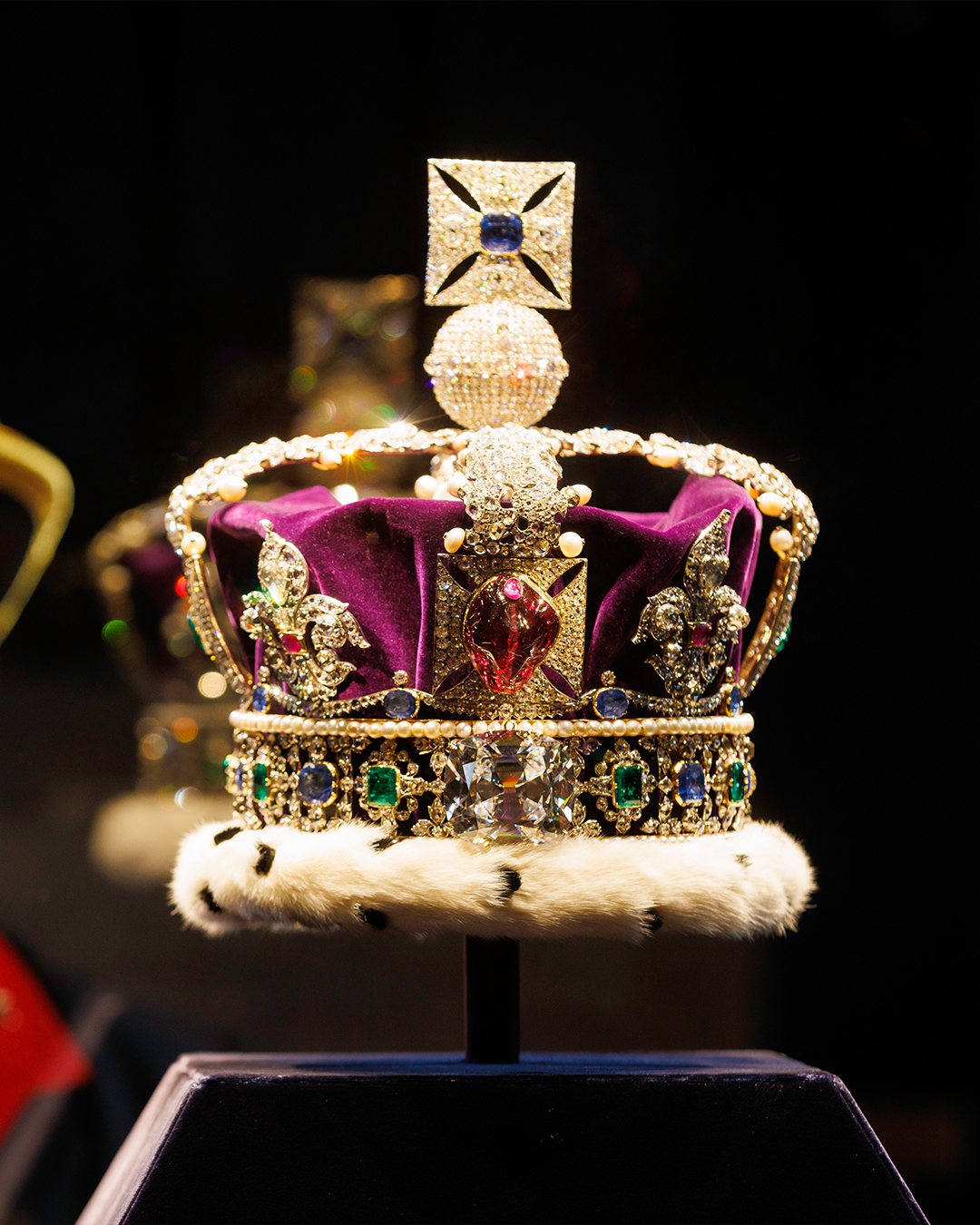
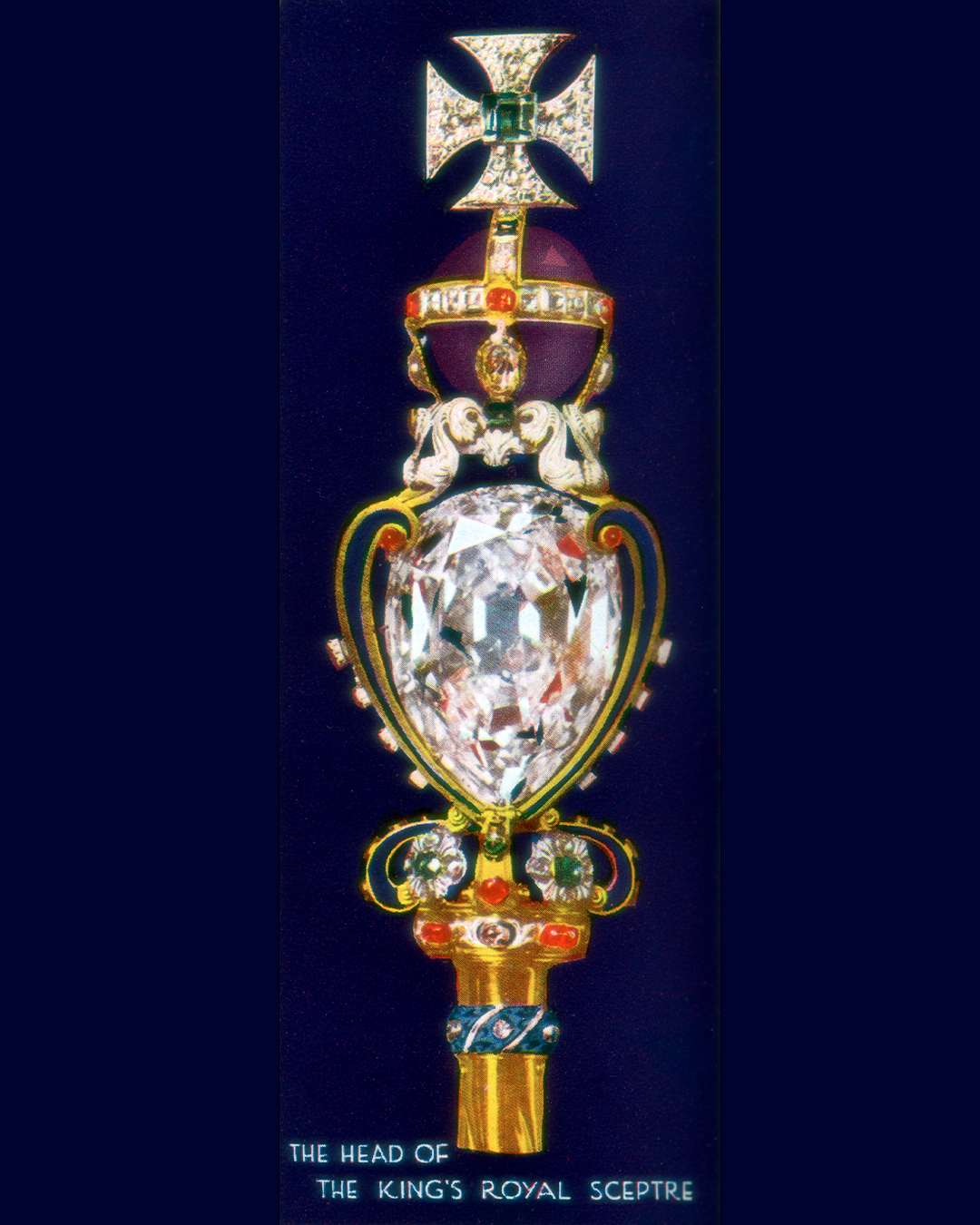
The historic Tower of London’s Jewel House has been newly restored so visitors can get a closer look at the main attraction: The British Crown Jewels, which include some of the world’s most famous natural diamonds. When they are pulled out for historic events, like the recent coronation of King Charles, it’s a reminder of the Brit’s lavish royal pomp and circumstance that has endured for centuries.
When it comes to royal jewels, nothing trumps the Cullinan I, the massive 503-carat diamond positioned in the British Crown’s royal scepter. It’s the largest colorless pear-cut diamond in the world.
That mammoth diamond was cut from the original Cullinan diamond, a 3,106-carat rough stone discovered in South Africa in 1905, which still holds the record as the largest known rough diamond. The Cullinan was presented to King Edward VII, who had it cut by the Asscher company into nine major stones which reside in different pieces in the British Royal collection. The second largest is Cullinan II, a 317-carat cushion-cut diamond set in the Imperial State Crown.
World’s Most Famous Natural Diamonds: The Orlov Diamond, Diamond Fund in Kremlin Armoury, Moscow

This 189.62-carat diamond, sometimes known as the Great Mughal Diamond, can currently be viewed at the Diamond Fund Collection in Moscow’s Kremlin Armoury. Described as being shaped like half of a pigeon’s egg, it is a rose-cut style diamond. As many great diamonds do, it has a very scandalous history (also be sure not to confuse it with the Black Orlov Diamond). The diamond which once weighed 300 carats legendarily was set as the sacred eye of the Hindu god Vishnu. Already an auspicious start! Then it was stolen around 1700 by a French soldier who disguised himself as a Hindu worshiper, but then fled with the jewel.
After many years the diamond landed in Amsterdam where Count Gregory Orlov purchased it for Empress Catherine the Great in hopes of being more than her favorite advisor. He wanted to marry her and become a ruler. When he gave it to her, she accepted it, but not his hand (but at least the diamond got his name.) It was Catherine who placed the diamond on top of her Imperial Sceptre in 1774 (she died in 1796.) It was luckily protected when Napoleon invaded Russia in 1812 and remained in Moscow. What is truly extraordinary about The Orlov is its entire history revolved around power, from the temple in India to the royal court of Russia.
World’s Most Famous Natural Diamonds: Aurora Pyramid of Hope, Natural History Museum, London
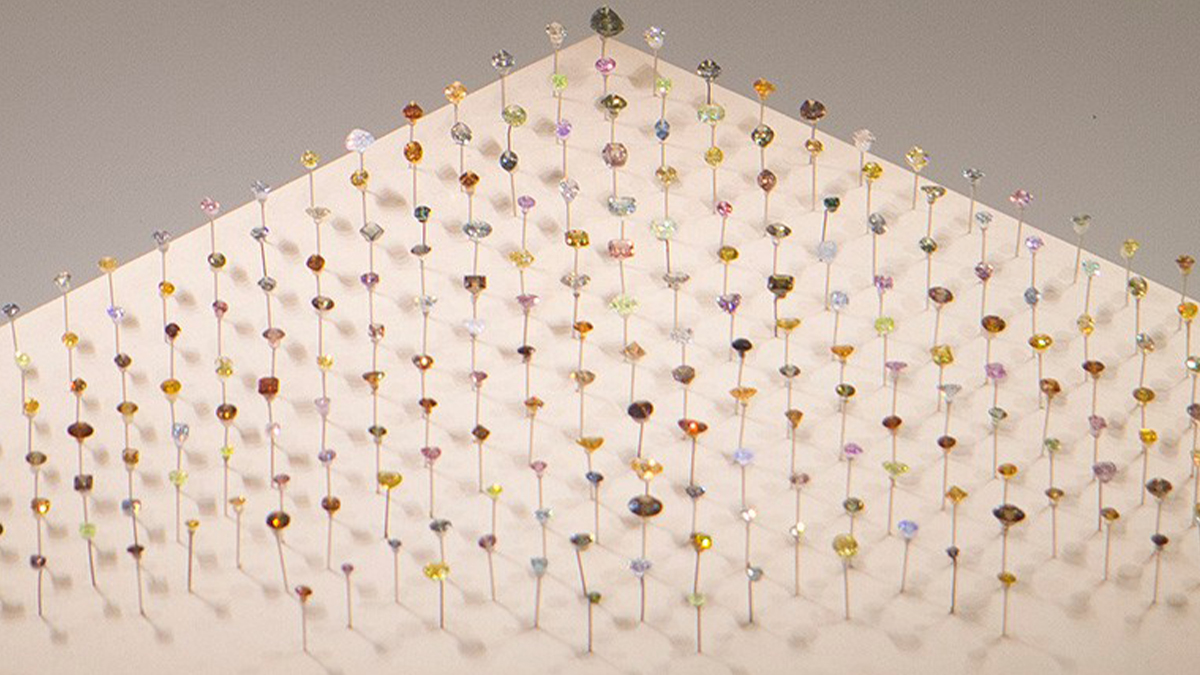
When we think of diamonds, white or colorless comes to mind. But natural diamonds exist in almost every color in the rainbow. These are known as fancy-colored diamonds and, in top qualities, they are remarkably rare. For every 10,000 white diamonds, only one is classified as fancy or with measurable color. That’s what makes the Aurora Pyramid, featuring 296 fancy-colored natural diamonds, a phenomenon.
The collection was assembled by passionate New York diamond collectors Alan Bronstein and Harry Rodman, who spent more than a decade searching for fancy-colored diamonds in every possible hue. The Aurora collection demonstrates that there is always more to discover about natural diamonds.


